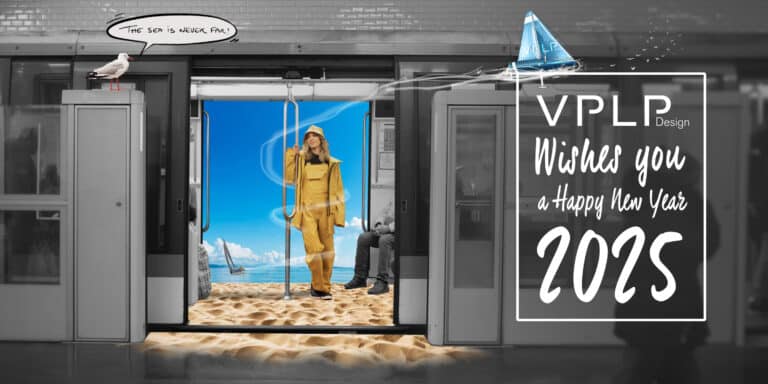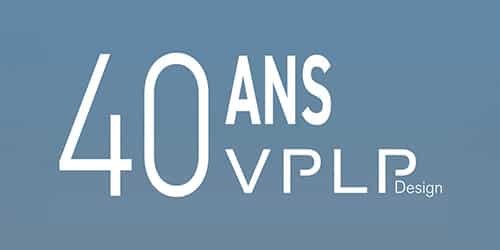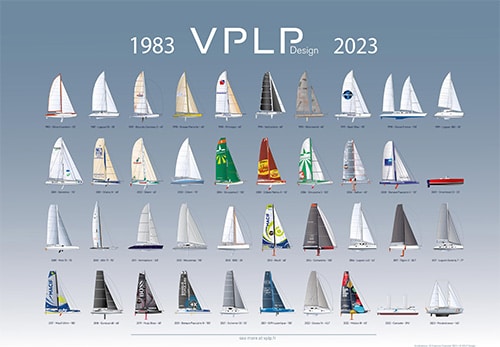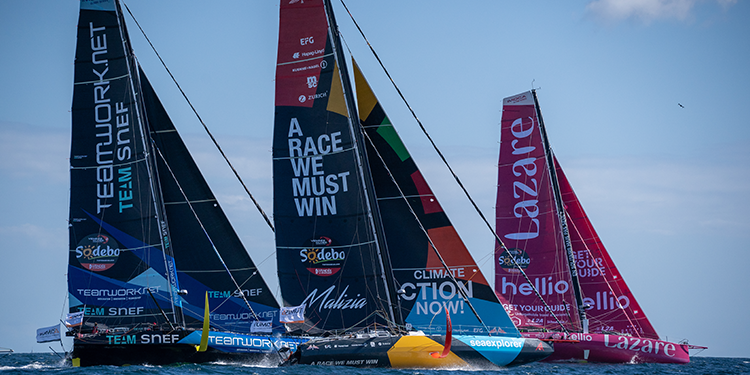PW50, the latest Ocean Fifty renamed today as Ciela Village, afforded VPLP Design the opportunity to test its new structural design tools using the finite element method. This is a key investment, enabling the firm to be more imaginative and incisive in the preliminary design stage. Nicolas Baral, head of structures, and engineering coordinator Xavier Guisnel talk us through the benefits.
The structures of today’s racing projects are so complex and sophisticated that we have to call upon the expertise of specialist contractors with which VPLP Design collaborates regularly, such as GSea Design for the latest Ultims or Gurit for the latest IMOCA.
such as GSea Design with whom VPLP Design works regularly on projects such as the Ultimates Banque Popualire XI and SVR-Lazartigue.
La complexité et le raffinement de la structure des grands projets de course actuels imposent de s’appuyer sur l’expertise de sous-traitants spécialisés
avec lesquels VPLP Design collabore régulièrement, tels que GSea Design pour les derniers Ultims ou Gurit pour les derniers IMOCA.
Over the last three years the firm has been developing its own finite element analysis tools. “It’s when foils appeared that we really began to take a closer interest in the subject,” says Nicolas Baral. “These appendices force us to test numerous configurations and run multiple loop calculations to immediately quantify the impact of the new design on the structure and vice versa.”
This approach was gradually extended to other platforms. PW50, the Ocean Fifty (formerly Multi50) commissioned by Fabrice Cahierc and skippered by Erwan Le Roux under the sponsorship of Ciela Village, was the first multihull to have its structural design calculated in-house. “It was an important task on an Ocean Fifty because the measurement rules are very strict. To make performance gains on the previous generation, we had to be extremely creative and explore every avenue,” says Xavier Guisnel.
By investing in licences for the finite element modelling and post-processing software FEMAP, VPLP now has a complete suite of tools at its disposal. Linked automatically to the design software, FEMAP immediately delivers the consequences of any changes to the boat’s architecture. “The aim is to be more responsive,” says Xavier Guisnel. “Calculation times shouldn’t be a problem in the preliminary design stage.”
Easily accessible, especially for the firm’s designers who haven’t had specific engineering training, the software has allowed us to understand, for example, the benefits of taking a very unusual position on the PW50’s float beams and rigging. “From the outset we integrated the constraints of the Ocean Fifty measurement rules which only allow carbon fibre in very specific places. And we ended up selecting a structure never before seen on these boats: the forward beam is rectilinear while the after beam, which receives the mast foot, is considerably swept back. This configuration optimizes the stress paths and leads to interesting gains in rigidity,” says Nicolas Baral.
As with all solutions, there are consequences and this layout lengthens the strut which supports the mainsail sheet traveller. But once again the finite element method comes to the rescue, ensuring that the weight increase is kept to a minimum by calculating very precisely the stresses involved.






